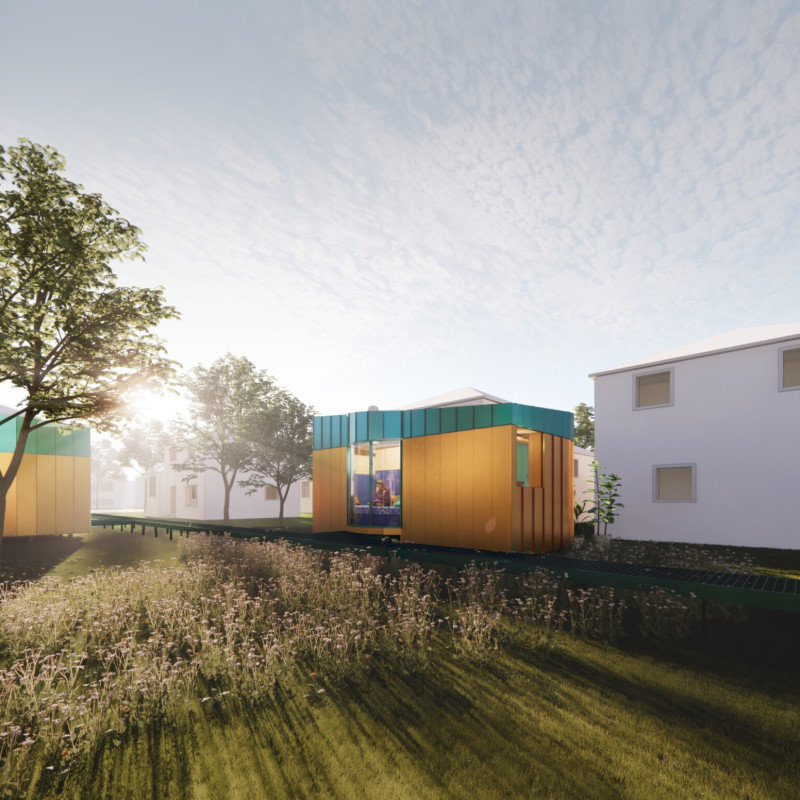5 key facts about this project
At its core, the project functions as a versatile space that accommodates various activities, fostering interaction and engagement among its users. This multifunctionality allows it to serve multiple roles, whether as a community hub, a cultural venue, or a space for relaxation and recreation. The careful layout maximizes accessibility and flow, ensuring that users can easily navigate between different areas, thereby enhancing the overall user experience.
The design incorporates a range of important elements that facilitate its functionality. Large windows allow for abundant natural light, creating a vibrant atmosphere within the interior spaces. These openings not only provide visual connections to the outside milieu but also contribute to energy efficiency by reducing the need for artificial lighting. Furthermore, the connection between indoor and outdoor areas invites users to engage with nature, enhancing their time spent in this architectural space.
The structural form of the building reflects a modern sensibility, utilizing materials that are both durable and aesthetically pleasing. The use of local materials not only reinforces the project's commitment to sustainability but also strengthens its connection to the geographical context. This choice fosters a sense of belonging, allowing the architecture to resonate with its environment. Textured facades and varied surface treatments add depth and visual interest, inviting closer inspection and interaction.
Integrating green spaces within the project is a distinctive aspect of its design approach. Rooftop gardens, for example, serve dual purposes by promoting biodiversity while providing recreational areas for users. This deliberate integration of nature into the built environment emphasizes the importance of ecological consideration in contemporary architecture. The design balances hardscapes with softscapes, creating holistic environments that nourish both the inhabitants and the local ecosystem.
Unique design features further elevate the project’s appeal. The incorporation of flexible spaces that can adapt to various uses exemplifies innovative architectural thinking. Movable partitions and multipurpose furniture allow inhabitants to reconfigure areas according to their needs, whether for social gatherings, workshops, or quiet contemplation. This adaptability reflects a contemporary understanding of space as living and evolving, rather than static and prescribed.
Moreover, the project pays attention to the details that enhance user experience. Elements such as textured walkways, thoughtfully placed seating areas, and aesthetic lighting contribute to the overall ambiance, encouraging users to linger and interact. Each component has been meticulously considered to foster a sense of community and well-being, which is essential in today’s fast-paced world.
The architectural intent embraces a philosophy that values both individual needs and communal harmony, presenting a nuanced understanding of contemporary life. By prioritizing user experience and environmental consciousness, the design transcends conventional architectural boundaries and represents a step forward in creating functional, sustainable, and engaging spaces.
For further insights into this thoughtful architectural project, including architectural plans, sections, and detailed designs, readers are encouraged to explore the project presentation. Engaging with these materials will provide a deeper understanding of the intricate architectural ideas and design strategies that shape this unique project.


























